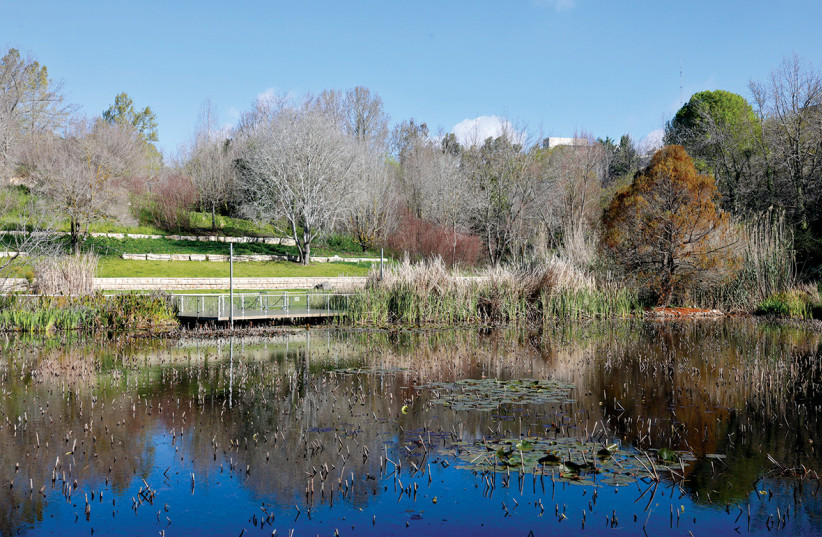
Nayot, a neighborhood situated in south-central Jerusalem, may not be the first go-to destination for any visitor to the capital, but the suburb serves its residents and visitors with peace and tranquility that can be hard to find among Jerusalem’s more bustling areas.
Legacy etched in time
The roots of Nayot run deep, echoing through the annals of biblical history. The name “Nayot” is mentioned six times in the Bible, evoking a sense of connection to ancient narratives. Its origins hark back to the Book of Samuel, where it is referenced in the context of the village of “Nayot at Rama,” situated north of Jerusalem. Prof. Shlomo Morgen, a longtime resident of the neighborhood, proposed the name, infusing it with layers of meaning and significance.
Pioneering spirit
Nayot marked a pivotal milestone in Jerusalem’s urban development as the inaugural housing initiative spearheaded by Anglo immigrants to Israel. Prior to its formal christening in 1963, it was known as “Hashikun Ha’anglo Saxi” (the Anglo-Saxon neighborhood). In 1957, a group of English-speaking immigrants seeking homes formed a committee, securing a lease for 16 dunams of land from the Jewish National Fund. This parcel, situated beneath the hill that now features iconic landmarks such as the Israel Museum and the Knesset, lay beyond Jerusalem’s municipal boundaries at the time.
Among the initial building work in 1960, some 62 semi-detached homes emerged, with a notable 50 residences finding owners from immigrant families originating in the US and Canada. Distinguished tenants included diplomats, such as Simcha Dinitz. Steering the architectural vision was David Resnick, later winning the Israel Prize for architecture in 1995.
In a pioneering move, the committee established a groundbreaking mortgage fund, a novel concept in Israel at the time. Energized by fundraising efforts in the United States, the initiative garnered $100,000, further bolstered by a matching contribution from the Israeli government.

Architectural splendor and cultural heritage
Architecturally, Nayot is characterized by its elongated two-story buildings, affectionately referred to as “blocks.” The streets bear the names of renowned writers and poets, paying homage to cultural luminaries. Beyond its physical landscape, Nayot is home to a vibrant array of cultural institutions and recreational amenities. Nayot’s most famous landmark is probably the Jerusalem Botanical Gardens, situated just off Herzog Street.
Serving as a hub for education, learning, and research, the gardens boast a diverse array of plant species from across the globe, meticulously curated and displayed in six distinct sections. Spanning approximately 30 acres, it stands as the largest botanical garden in Israel, nurturing over 6,000 species and varieties of live plants. From the verdant landscapes of Southern Africa to the vibrant flora of the Mediterranean, each section offers a glimpse into the ecosystems of its respective region. Whether strolling amid the blooms or partaking in cultural events, visitors to the Jerusalem Botanical Gardens are immersed in a world of botanical marvels.
The place for young families
Nayot’s population reflects a mosaic of backgrounds and experiences, embodying the diversity that defines Jerusalem. With a current population of 2,223 residents, including 588 minors and 524 individuals over the age of 65, the neighborhood thrives as a community of families and individuals of all ages. Notably, the population has experienced steady growth, surging from 1,300 residents in 2012.
Nayot’s quiet streets and lack of major city establishments (barring the Botanical Gardens) has led it to focus on its residential importance, and many young families find a perfect place to raise their children in the neighborhood. ■
Population:
- 25,000
Avg. Real Estate:
- Home (buy) – NIS 2.4 million
- Apt. (rent) – NIS 4,300/mo.
